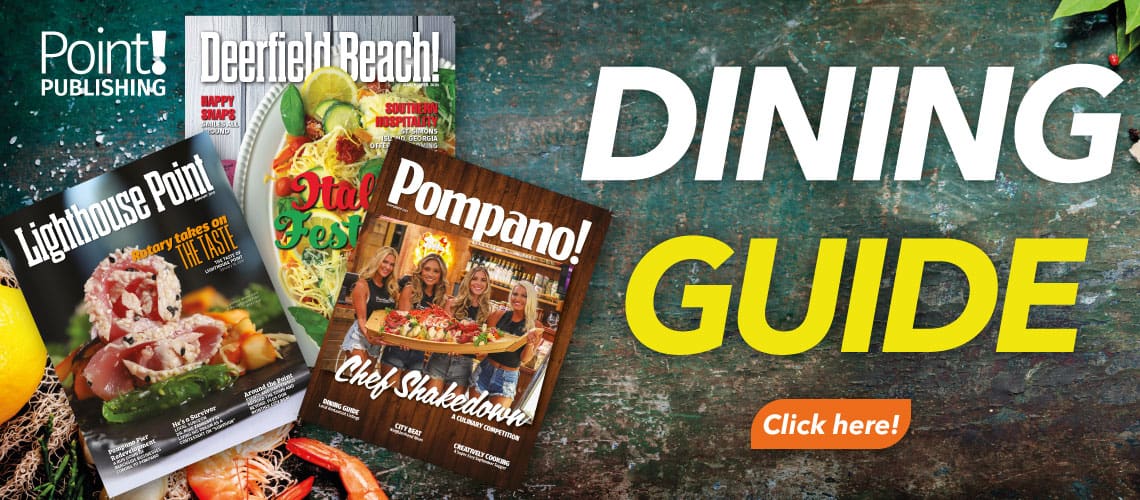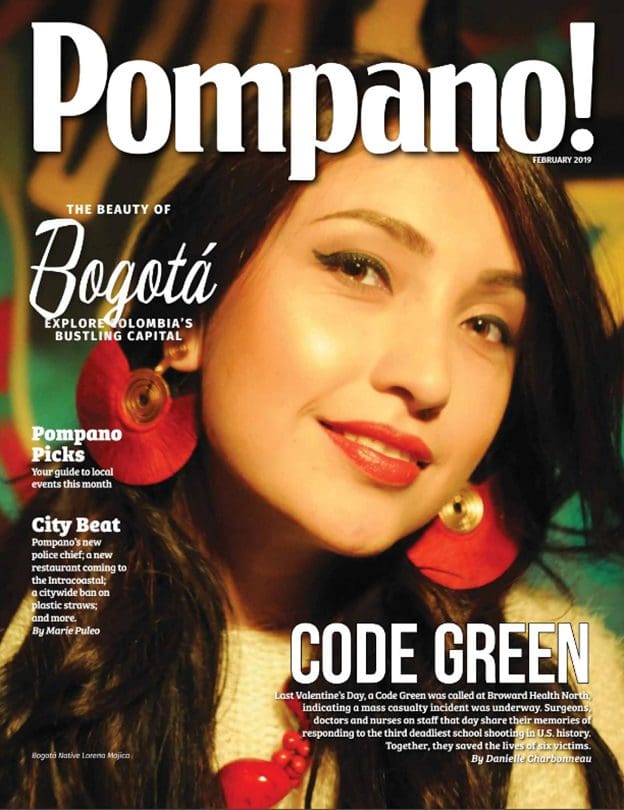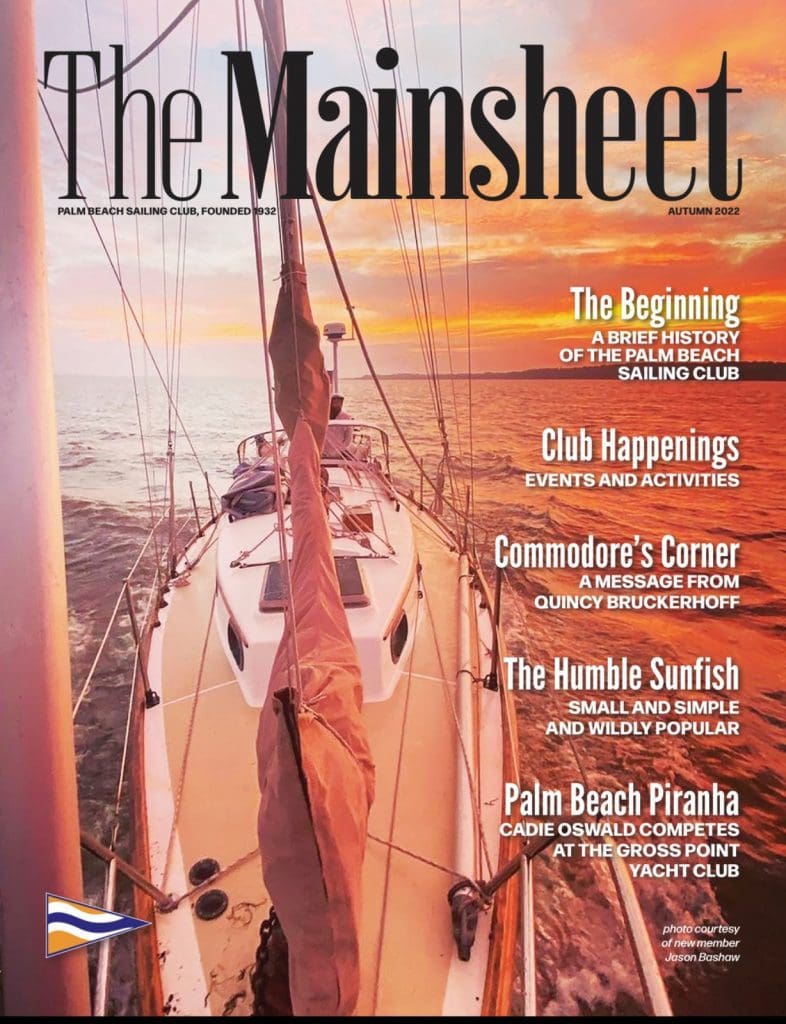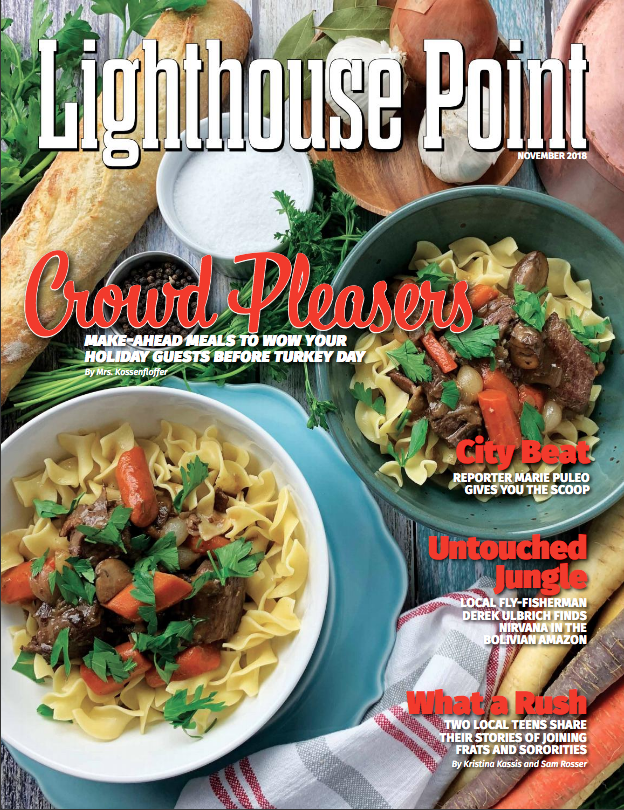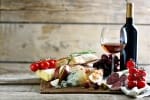Wining for Asian Dining
By David Ehrenfried

I DON’T MEAN TO WHINE. I RECENTLY ATE OUT WITH FAMILY AT A VERY NICE INDIAN RESTAURANT NEAR LIGHTHOUSE POINT. THE FOOD WAS QUITE GOOD, BUT I was disappointed with the wine list. No big deal. It shouldn’t surprise anyone that a person who writes about wine can be particular about what wines to drink with certain foods.
I had hoped for a glass of riesling to enjoy with the delicious spicy dishes we ordered, but the restaurant had none. Its wine list had a section entitled “Sauvignon Blanc, Riesling, and Sparkling,” or something to that effect. Riesling was not listed, however. I asked the waiter about the missing entry, noting how good riesling wine is with Indian food. He had no explanation and pointed to a listing for prosecco sparkling wine, an interesting choice but not riesling. I ordered beer instead.
I haven’t studied Asian restaurant menus or wine lists extensively, so I’m not sure how many of their proprietors understand or care what wines match up favorably with their foods. I suspect, many simply offer the wines their beverage distributors recommend or what they themselves believe their customers will order, such as chardonnay, sauvignon blanc, pinot noir, and cabernet sauvignon. It’s hard to be critical of that logic. Sales, after all, are a pretty good measure of consumer preferences. Nonetheless, I wish more Indian and other Asian restaurants offered more wines that go really well with their cuisines and then encouraged their customers to order them. A short note would be great next to the Rogan Josh or Chicken Korma that says, “Goes great with our Washington Kung Fu Girl riesling.” (That’s a real wine, as you may know.) Alternatively, of course, we can always order take-out and drink whatever we like at home.
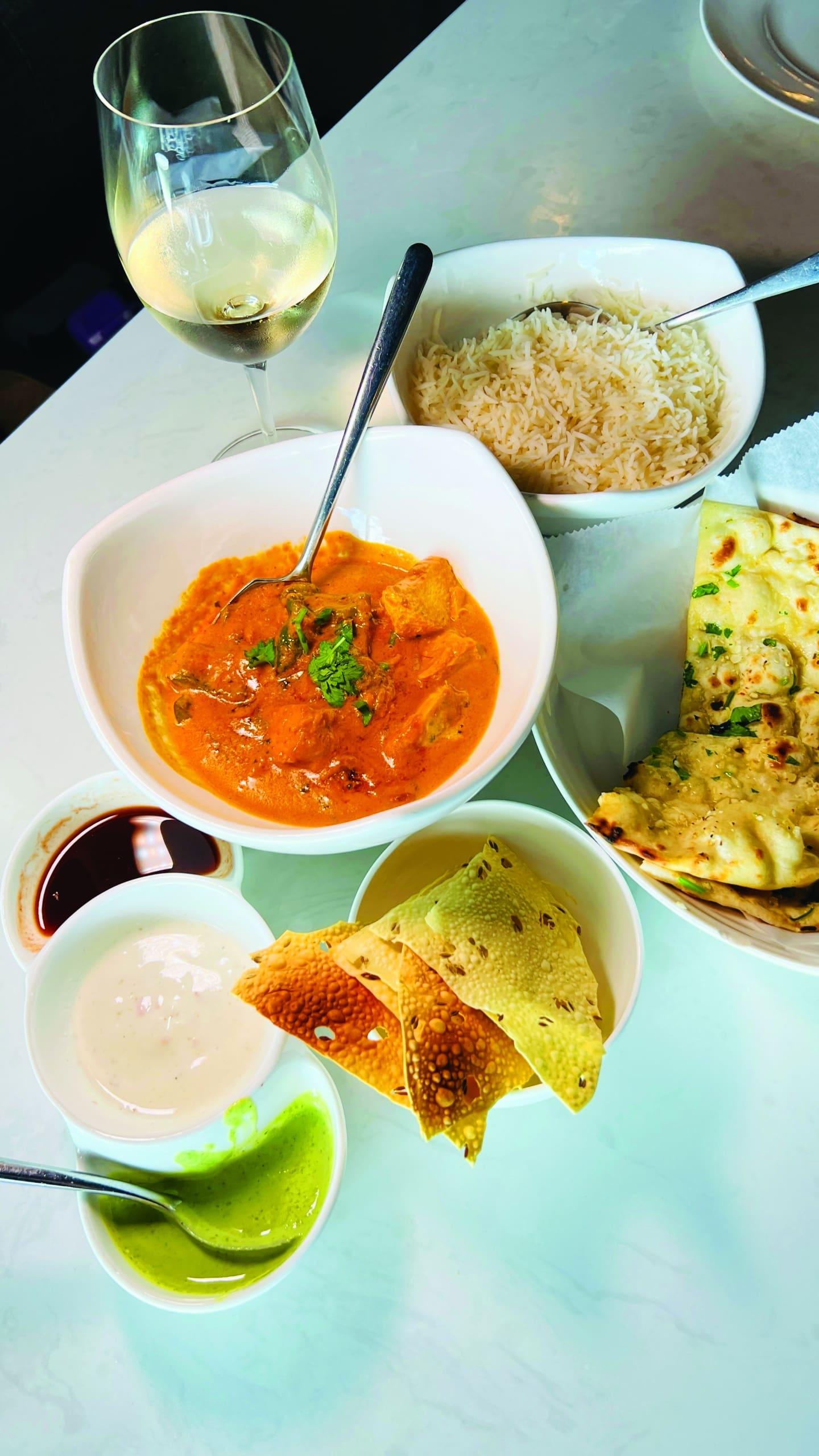

What’s So Special about Pairing Riesling with Asian Food?
Now that’s off my chest, what’s so special about drinking Riesling wine with Indian and other Asian foods? Isn’t Riesling one of those cloyingly sweet German white wines that comes in long slender bottles for people who haven’t graduated to white wines like Chardonnay, Sauvignon Blanc, or Pinot Grigio? Yes to the bottles.
While some Riesling can indeed be sweet, it’s a wine that is made in many styles from quite dry to subtly raisin sweet. It’s also made in many countries, always from the same Riesling grape varietal. For many wine lovers Riesling is the greatest white wine grape because of the wide range of delicious wine styles made from it and because of its robust, often complex and beguiling aromatic and flavor profile. These qualities make good Riesling wine wonderful to sip on its own or to enjoy with a wide range of cuisines and from appetizers to dessert. As for the slender bottles, They’re traditional worldwide for Riesling and similar wines, such as Gewürztraminer, Grüner Veltliner, and Portuguese Alvarinho. The shape is said to have been developed long ago for economic reasons to be thinner, lighter, and easier to ship on winding river transport.
Anyway, I’m very fond of most kinds and styles of Asian cooking: Indian, Chinese, Korean, Japanese, Thai, Vietnamese, Malaysian, and so forth. I love the distinct flavors and aromas of these cuisines create using spices and other ingredients like cinnamon, cumin, turmeric, coriander, ginger, basil, cilantro, cardamon, fennel seeds, and of course various chilis and peppercorns. These ingredients alone present an aromatic challenge for many wines, made more difficult by the ample salt and oil used in preparing many Asian dishes. Think, for instance, Indian and Malaysian curries, Thai Tom Yum soup, Chinese Sichuan-style Kung Pao chicken, Japanese spicy tuna rolls, and kimchi plus almost any of a long list of popular Korean dishes. Good dry and off-dry Riesling wines share a special combination of characteristics or chemistry for complementing these aspects of Asian cooking: low alcohol content; tantalizing fruit and herbal aromas and flavors; citrusy acidity plus refreshing green apple tartness and crispness; and an element of sweetness that should suggest apricots, nectarines, mangos, pineapples, pink grapefruit, or other fruits.
Wine alcohol content is important to keep in mind when eating spicy-hot dishes, because alcohol itself has a warm to hot taste sensation that can intensify the heat in these foods. That combination can overwhelm more subtle flavors and aromas in both the food and wine we’re trying to enjoy. Most Riesling has alcohol content of 8-12% or less by volume (ABV). That’s generally lower than many other light white wines like Sauvignon Blanc, and very low compared to California Pinot Noir, which often has 14-14.5% ABV, and California Cabernet Sauvignon that can clock in at 15-16%. We’re all free, of course, to drink our favorite full-bodied red wine with pungent or spicy hot Asian cooking. But trust me, there are better and more enjoyable combinations.
Aromatically, good Riesling wine’s focused but pleasing citrus, stone-fruit, and tropical fruit aromas and flavors stand up well to the potent, sometimes exotic smells and tastes of Asian dishes. Further, Riesling’s racy acidity and tartness match up well with Asian foods. Cold Riesling’s crisp acidity help to tone down accentuated salty and fatty or oily flavors. Riesling’s acidity and tartness also complement ingredients like lime, basil, anise, cinnamon, and cilantro. Likewise, Riesling’s tangy sweetness adds a pleasant dimension to saltiness and the heat from hot or mild chili, pepper, and other pungent spices.
Give Riesling a try with Asian food, if you haven’t. I think you’ll find the paring of good dry or off-dry Riesling wine with spicy Asian food to be a delicious combination.
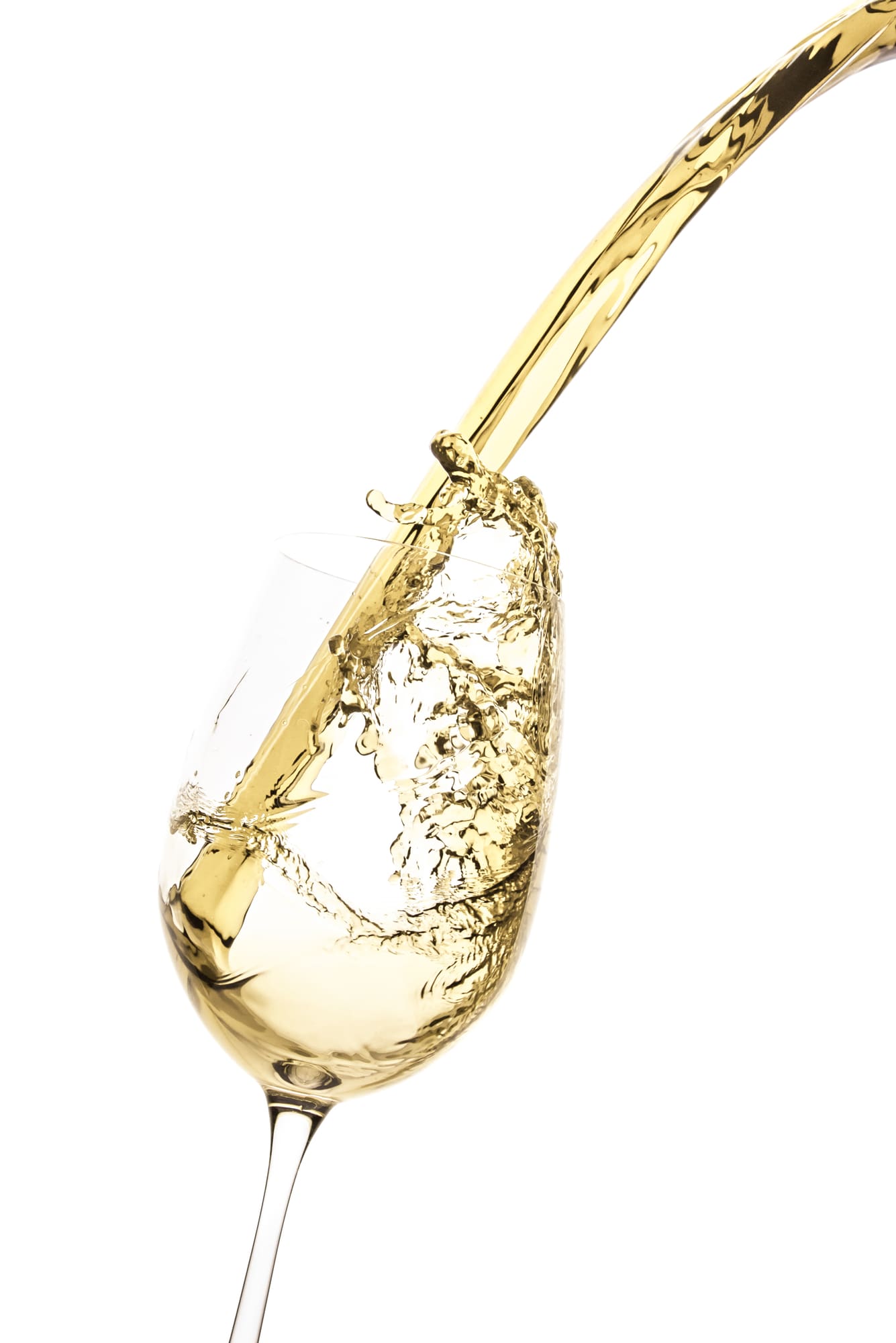

What Wines to Look For
Arguably, the best Riesling wines are made in Germany, but many superb ones come from Austria and France’s Alsace region as well. Outside Europe, excellent Rieslings also are made in Australia, Upstate New York, and Washington State. Restaurant lists sometimes include relatively inexpensive German Riesling wines made by Leitz, Loosen, Nik Weis, and several other large producers. These will likely be dry or off-dry regional wines made from grapes sourced from many places in Germany’s Rhine River region, or perhaps in a specific subregion, such as Mosel or Nahe. These winemakers also produce more costly wines made from grapes from specific vineyards and in regulated categories of grape quality and flavor intensity. I suggest looking for wines marked Kabinett, Qualitätswein, or Spätlese on their labels. Figure to spend $15-$35 per bottle at retail. If you see the German word for dry, trocken, on the front label, it will likely be a bit drier than other Rieslings. Additional Riesling wine categories include Auslese, Beerenauslese, Trockenbeerenauslese, and Eiswein, all of which are more costly, progressively sweeter and more viscous, and more suitable for dessert or after meal enjoyment.
There are literally dozens of fine German Riesling wine makers. Some of my favorites include Dönnhof, Selbach-Oster, Thanish, Gunderloch, Fricke, and Prüm. They all make excellent wines at many retail price points from $15 and up a bottle. Alsatian and Austrian Rieslings tend to be drier than their German counterparts. Several notable Alsatian producers include Trimbach, Weinbach, Hugel, and Boxler. A few of the many notable Austrian producers include Prager, Pichler, Wachau, and Gobelsburg.
Restaurant and bars that list Riesling on their menu’s often carry Washington State’s St. Michelle and 14 Hands, or perhaps Charles Smith’s Kung Fu Girl, an inexpensive but consistently delightful wine. The Upstate New York Finger Lakes region is known for its terrific and affordable Riesling wines, but sadly they don’t seem widely available in Florida. Among my favorite producers are Forge, Ravines, Weimer, Red Newt, Keuka Lake, and Boundary Breaks.
The selection of Australian Rieslings in the United States is relatively small but generally rewarding. Some producers include Leewin, Kilkanoon, D’Arenberg, and Grosset.
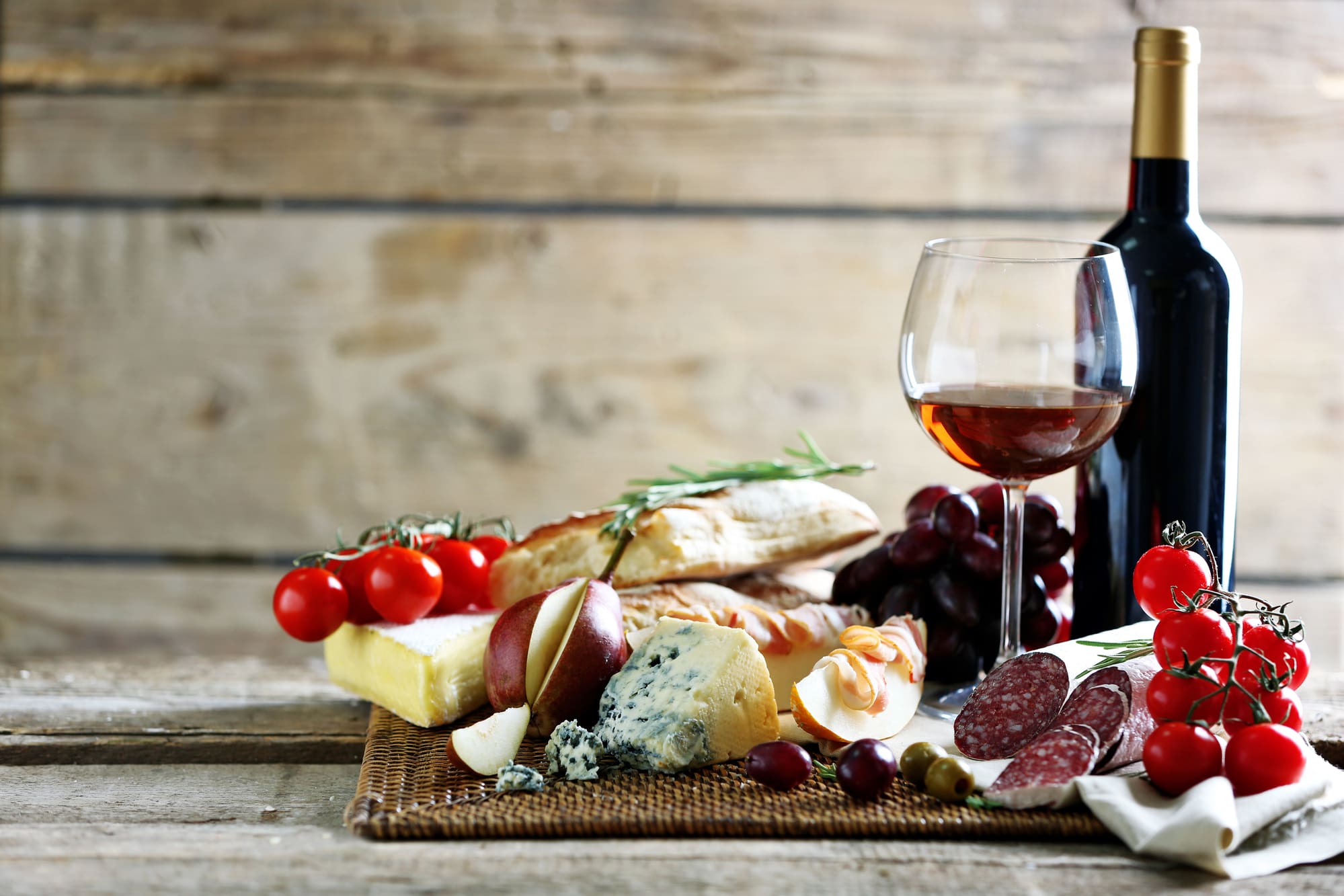

Alternatives to Riesling
There are many other wines that share selected aspects of Riesling’s almost perfect affinity for Asian cuisine. With Thai, Vietnamese, and Malaysian food, for example, consider Cava and Albarino from Spain (Alvarinho in Portugal), Viognier from France or California, Chenin Blanc from France or South Africa, Soave or Fiano from Italy, and Sauvignon Blanc blended with Semillon from France or California. With Indian food, try Torrontes from Argentina, Moscato, a semi-sweet effervescent wine from Italy, Sylvaner or Gewürztraminer from Germany, Alsace, or Washington State, Loureiro from Portugal, and semi-dry Vouvray from France. With Japanese sushi or sashimi consider Austrian Grüner Veltliner, French Sancerre or other Sauvignon Blanc from California, New Zealand or South Africa, a steely Chardonnay-style like French Chablis, Vinho Verde from Portugal, and Soave, Pinot Grigio, Arneis, or Verdiccheo from Italy. With Chinese food, Riesling is my first choice, although any number of flavorful white wines can work depending on what you plan or like to eat. For milder duck, spare rib, or beef dishes, for example, some red wines like Syrah, Merlot, or Zinfandel can pair nicely.
Ultimately, the best wine with any food is the wine and food combination you enjoy best. That said, it’s fun and often rewarding to explore other combinations. If you don’t like a particular combination, chalk it up to just one unfortunate meal and wine pairing in a hopefully long, adventuresome, and enjoyable life.
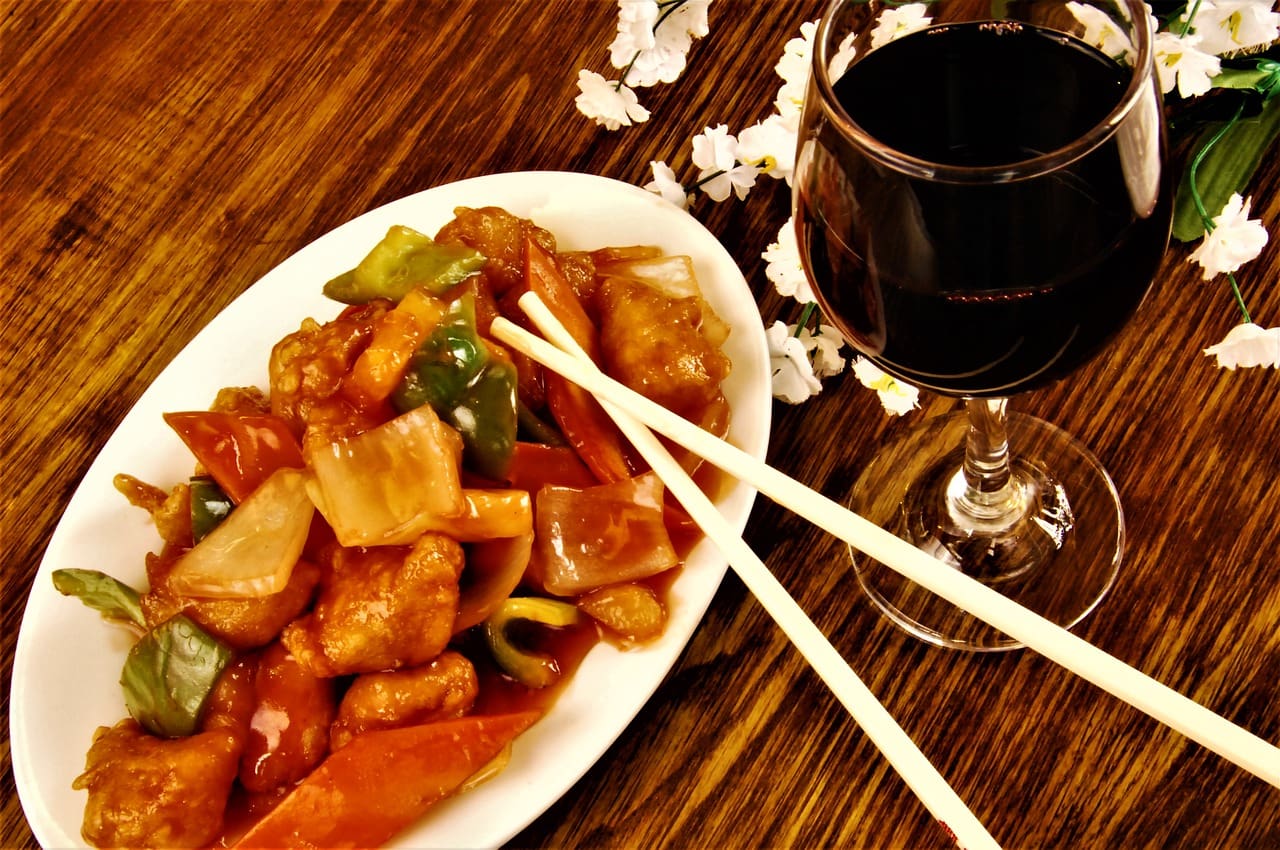

SUBSCRIPTIONS
Never miss a Story! Subscribe to our Email Newsletter here
Subscribe to our Print edition here
CONTACT US



